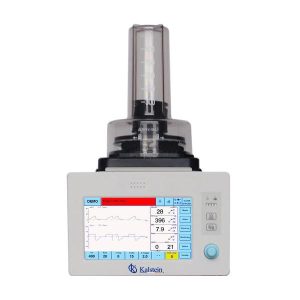The continuous development and expansion of veterinary medicine over the past decades have allowed for significant advancements in techniques and working tools, with inhalation anesthesia being a perfect example. This is a technique that brings innovation, effectiveness, and safety to veterinary surgical procedures due to its simple use, precise control, and the patient’s rapid recovery.
Inhalation anesthesia is administered through a vaporizer that turns the liquid anesthetic into a gas, which is then inhaled by the animal through a mask or endotracheal tube. Thus, this technique offers multiple benefits over traditional or injectable anesthesia.
Greater Control and Safety
The main benefit of inhalation anesthesia in veterinary medicine lies in the control it offers the professional during the intervention. Unlike injectable anesthesia, inhalation allows for instant and precise management of the level of anesthesia, adjusting it according to the needs of the animal and the intervention in real time.
In addition, this technique offers greater safety since the anesthetic dose can be adjusted as the surgery progresses, thus preventing possible complications from an overdose or inadequate dose. It also reduces the risk of adverse reactions, as the anesthetic is exhaled by the animal and absorbed by an absorption system instead of being metabolized by the body.
Quicker and Less Traumatic Recovery
Inhalation anesthesia also contributes to a quicker and less traumatic recovery for patients. Once the intervention is completed, the anesthetic is no longer administered, and the animal begins to wake up gradually.
Thanks to the exhalation of the anesthetic and it not being metabolized internally, toxic substances are eliminated from the body faster. Also, this technique significantly reduces the sensation of disorientation after surgery compared to injectable anesthesia, resulting in a calmer and less stressful waking up for the animal.
Utility in All Types of Patients
Inhalation anesthesia is useful in a broad range of patients, regardless of their size, breed, age, or health status. It is especially beneficial in high-risk patients such as geriatric animals, neonates, obese animals, or those with chronic diseases.
In summary, inhalation anesthesia is a highly useful tool in veterinary medicine thanks to its safety, efficiency, and the rapid recovery it offers animals. Without a doubt, we are witnessing a qualitative leap in the care and attention of our beloved animal companions, allowing us to ensure a more promising future in the field of veterinary medicine.

